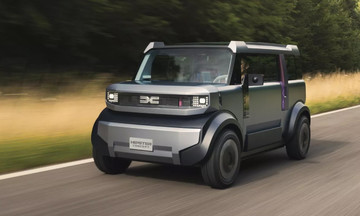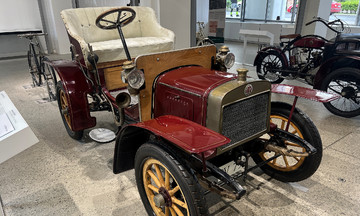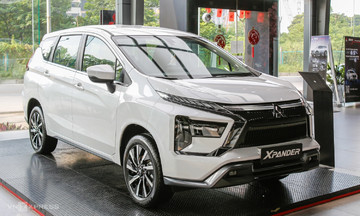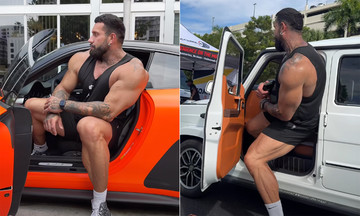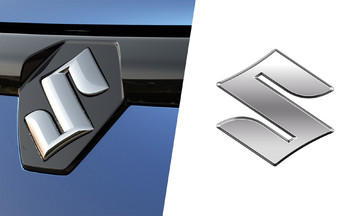An accident on the morning of 15/9 involving a water truck on the Cau Gie - Ninh Binh highway resulted in 18 injuries, extensive vehicle damage, and prolonged traffic jams. Authorities and the public are questioning the safety of slow-moving vehicles like water trucks on highways and debating whether to ban them or find ways to improve safety for everyone.
While warning lights and cones help drivers see these vehicles from a distance, they aren't always enough to prevent accidents. Many developed countries have adopted a safer solution: truck mounted attenuators (TMAs). These devices, attached to the rear of maintenance or traffic warning vehicles, act as "lifesavers" for workers and other vehicles on highways.
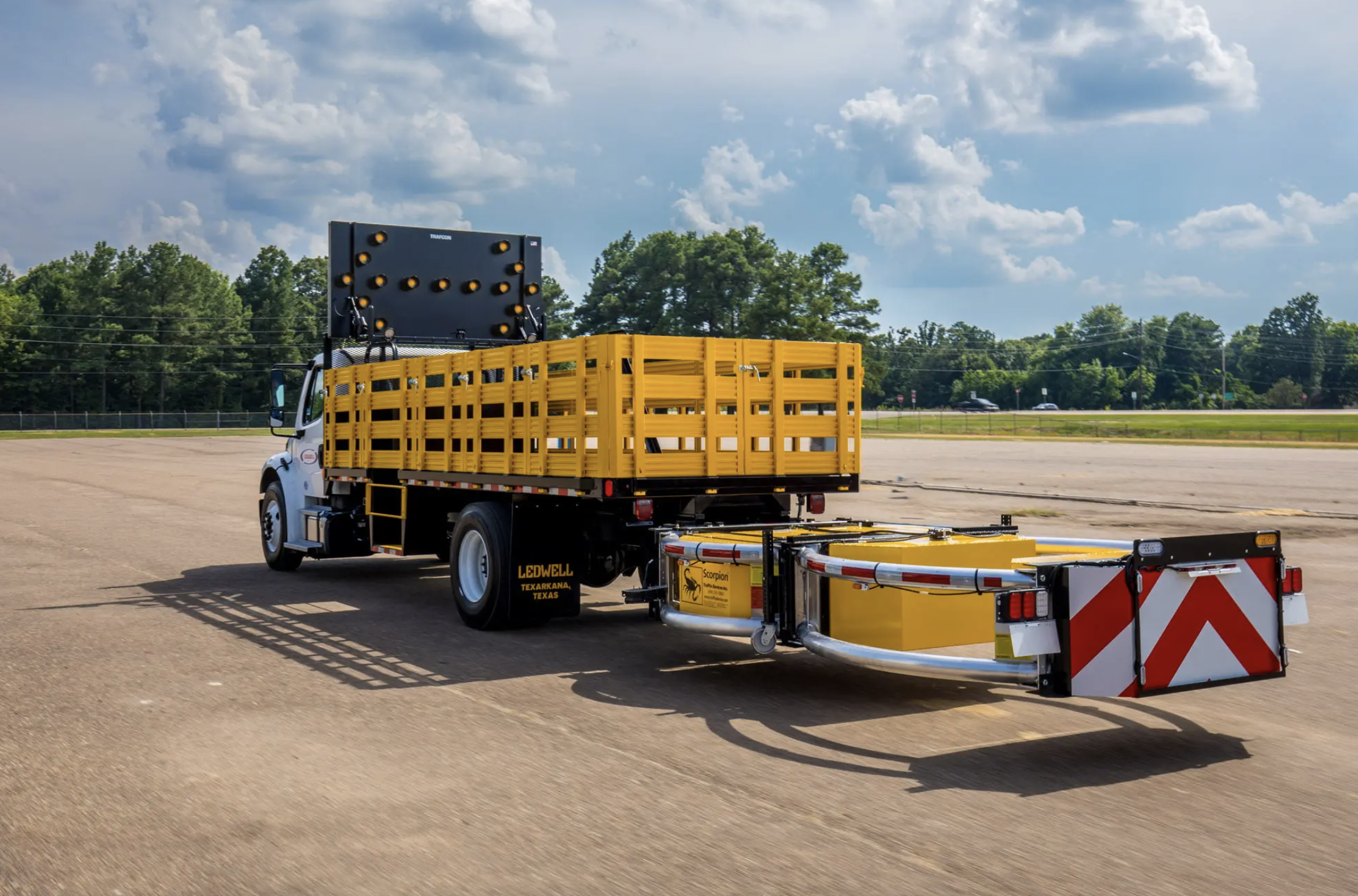 |
A vehicle equipped with a TMA in the US. Photo: LedWell |
A vehicle equipped with a TMA in the US. Photo: LedWell
How TMAs work
A TMA is a large box mounted on the back of a highway maintenance or traffic warning vehicle. Inside, it contains compartments designed to absorb energy. In a rear-end collision, instead of hitting the maintenance vehicle directly, the impacting vehicle hits the TMA. The TMA then distributes and absorbs the impact force, minimizing injuries and damage to all vehicles involved.
Tests have shown a car hitting a TMA at 100 km/h sustains significant front-end damage, but the driver remains safe, and the maintenance vehicle in front is virtually unharmed. This is why TMAs are considered "lifesavers" on highways.
Scorpion TMA test video by TrafFix Devices. Video: TrafFix Devices
Why are TMAs necessary on highways?
The speed difference between maintenance vehicles and other traffic on highways is substantial. Flashing lights, electronic signs, and reflective cones only provide advance warning. They cannot reduce the force of an impact in a collision. TMAs serve as a final barrier, absorbing most of the impact energy, protecting both the maintenance crew and the driver of the impacting vehicle.
In the US and many European countries, in addition to construction vehicles during highway maintenance, traffic engineers often deploy a "shadow vehicle" behind the work zone. This vehicle travels immediately behind the work area or the workers, warning approaching traffic with electronic signs, guiding lane changes, and providing additional warnings with lights and signs. Crucially, it also has a TMA attached to its rear to prevent catastrophic accidents involving the work crew in case of a collision.
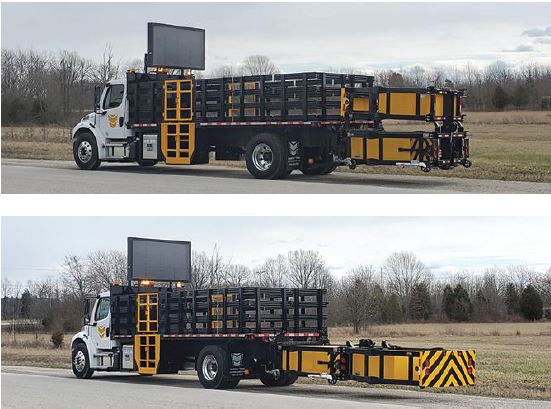 |
A shadow vehicle in the US with an electronic warning sign and a foldable TMA at the rear. Photo: Site-Safe |
A shadow vehicle in the US with an electronic warning sign and a foldable TMA at the rear. Photo: Site-Safe
Data confirms the effectiveness of TMAs. A 2014 report by experts at the Texas A&M University System's transportation research institute showed that rear-end collisions involving TMAs reduced average damage costs by nearly 200,000 USD compared to accidents without them.
Furthermore, a report by researchers at George Mason University and the Virginia Tech Transportation Institute, published in Future Transportation (2022), found that combining TMAs with shadow vehicles and electronic warning signs reduced the rate of vehicles approaching too close to work zones before changing lanes from over 18% to about 3.6%, demonstrating a significant improvement in collision prevention.
The cost of a TMA ranges from 20,000 to 35,000 USD, depending on the level of protection, excluding the specialized truck required to mount it. After a direct hit, the attenuator box is usually completely deformed and needs replacing at a cost of 10,000 to 15,000 USD. While the initial investment is substantial, studies show that when weighed against the economic damage and, more importantly, the loss of life in highway work zone accidents, TMAs offer significant benefits and are worth considering for deployment in high-risk areas.
Ho Tan




